Author: Larry St Aubin
Today is a short drive north to Riding Mountain National Park. This should give us plenty of time to rent a canoe when we get there.
Riding Mountain National Park is located on Treaty 2, the traditional shared land of Cree, Oji-Cree, Dakota, Anishinaabe, and Dene peoples, as well as the homeland of the Métis Nation.
I took a few pics of the artwork in the lobby of the hotel. The buffalo was presented by the Manitoba Assembly of Chiefs.
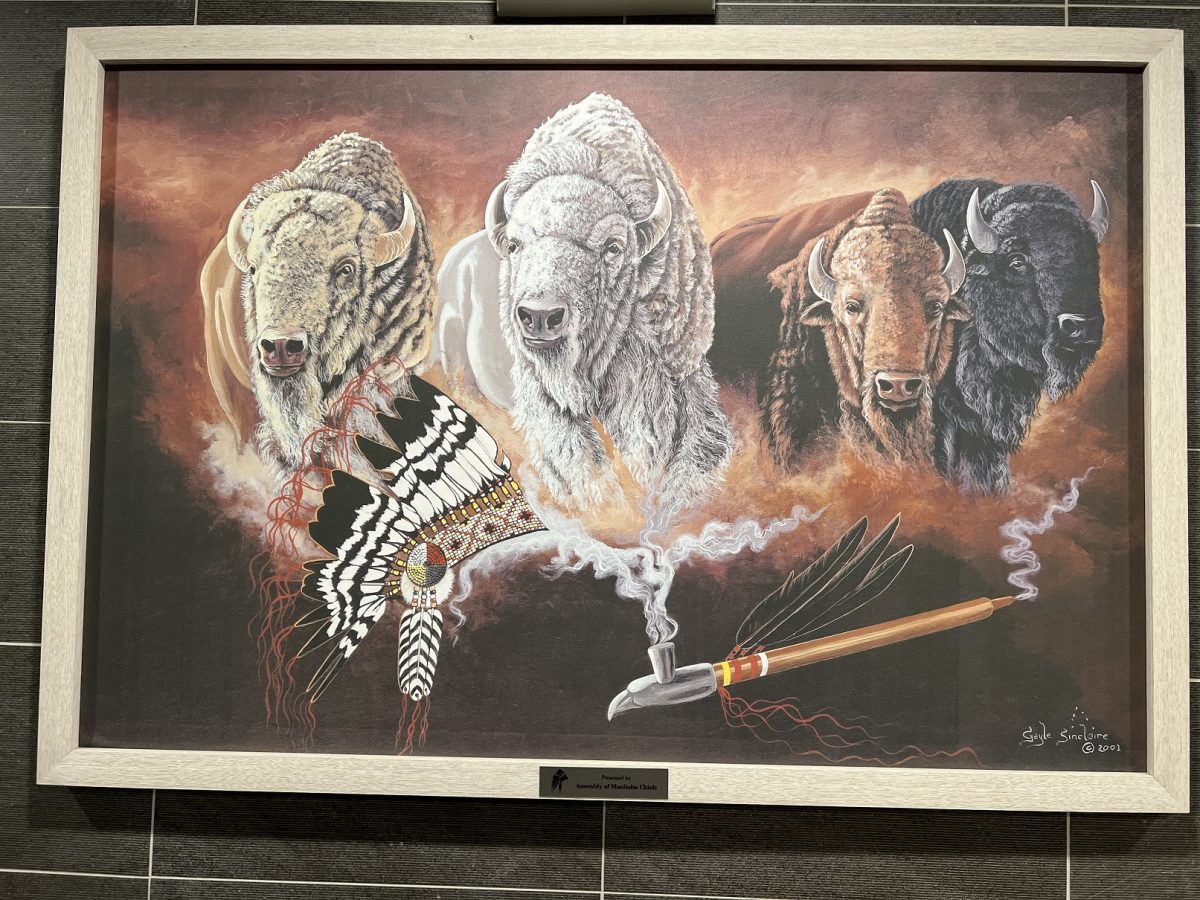
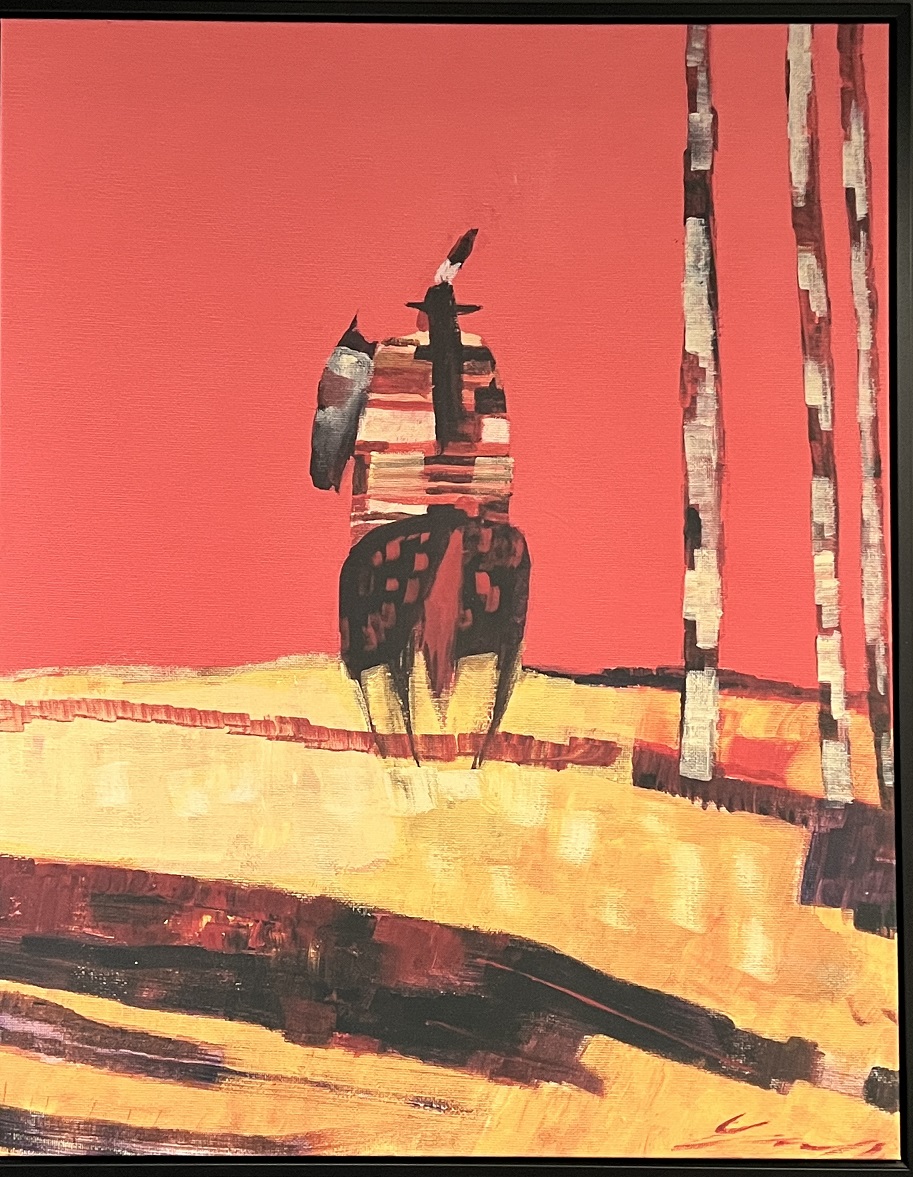
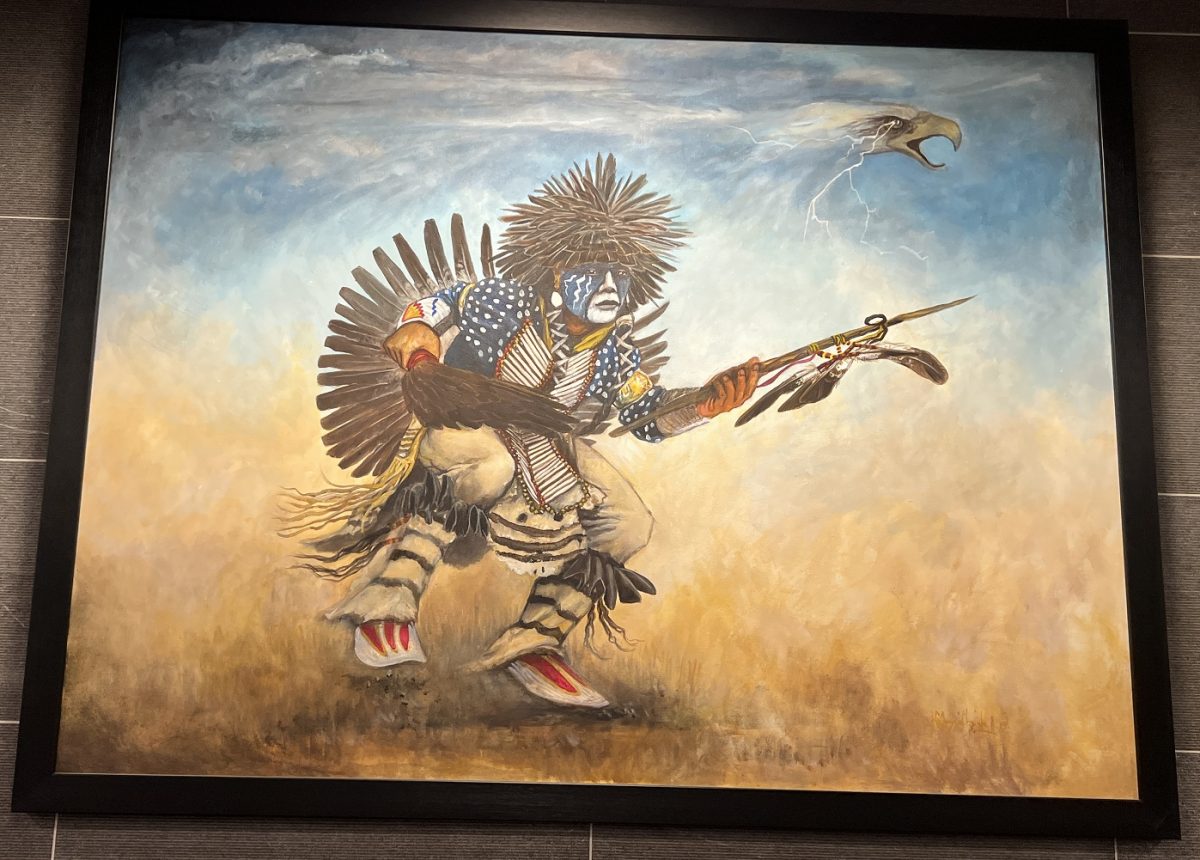
Near the hotel is Yellow Quill Provincial Park and it has an off-leash dog area. We head over to check it out. Both Greta and Eve approve.
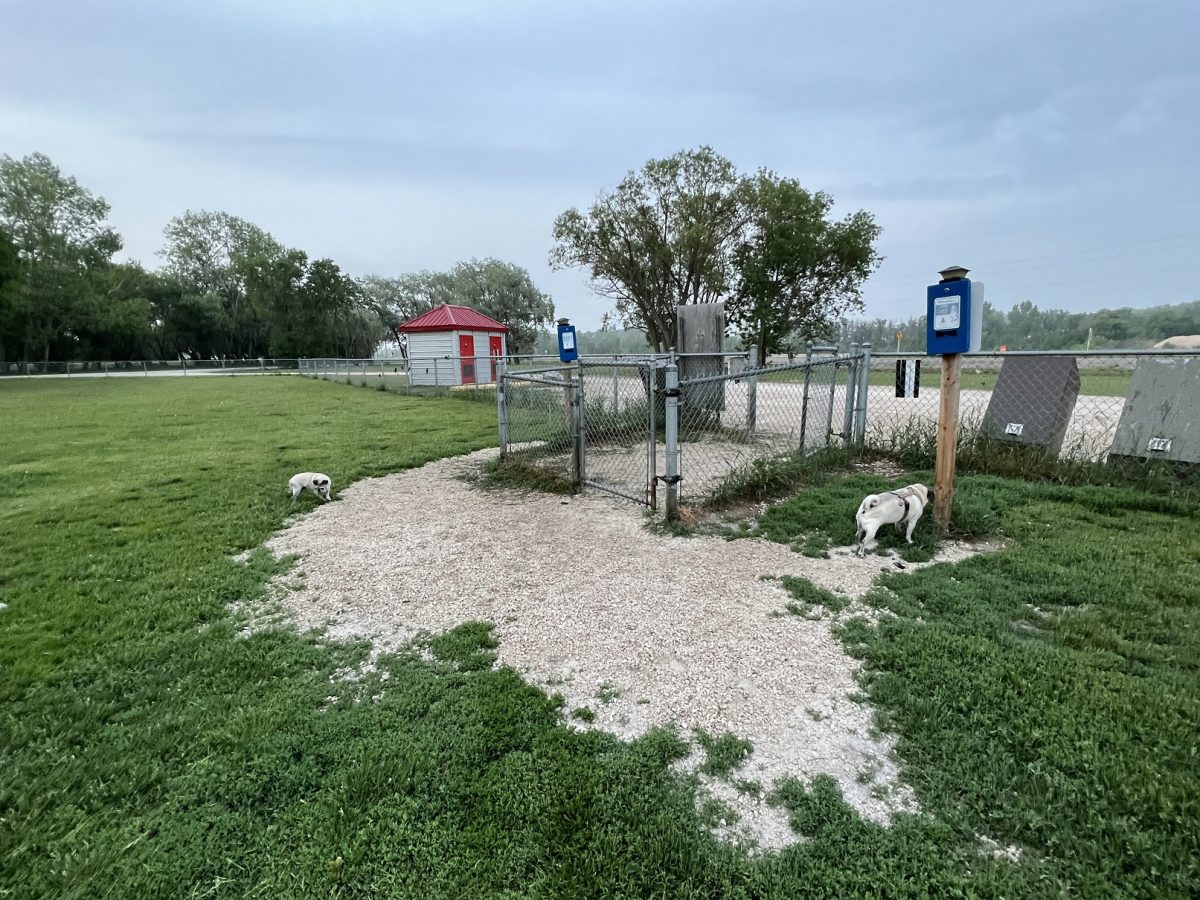
Canada’s largest Great Grey Owl statue – Portage La Prairie. What began as a commissioned art piece to celebrate Manitoba’s official bird has become an iconic attraction in the Portage la Prairie region for close to 20 years. The statue is a collaborative effort of Manitoba artist Jake Goertzen and local owl aficionado Bryan Mitchell. The piece stands thirteen feet high, weighs 2,140 pounds and is composed of an estimated 6,000 individual pieces of steel welded together. The Owl draws both nature and art lovers to see it in person.
I had a little trouble finding it because it is hidden behind 2 trees and some bushes.
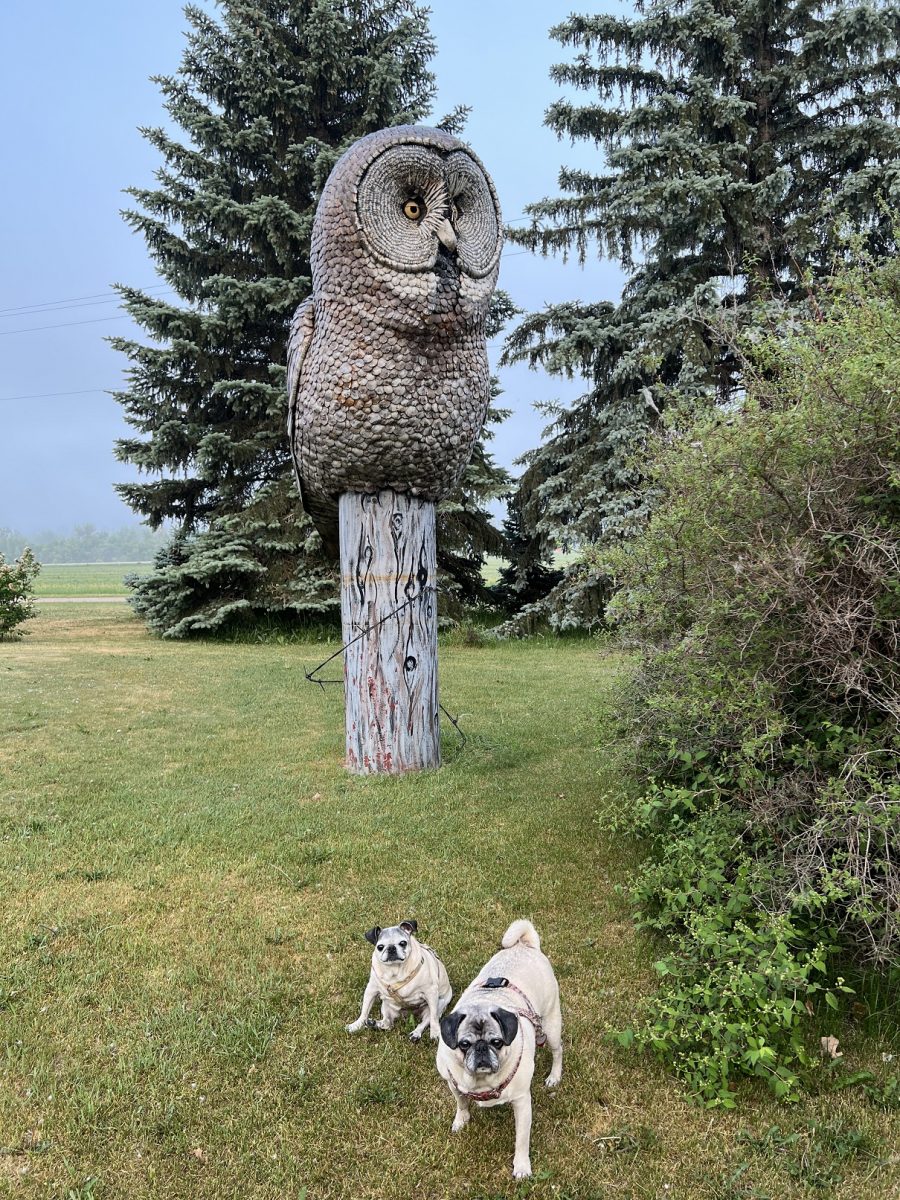
It was looking a little tarnished to me. Someone needs to provide some TLC and shiny it up.
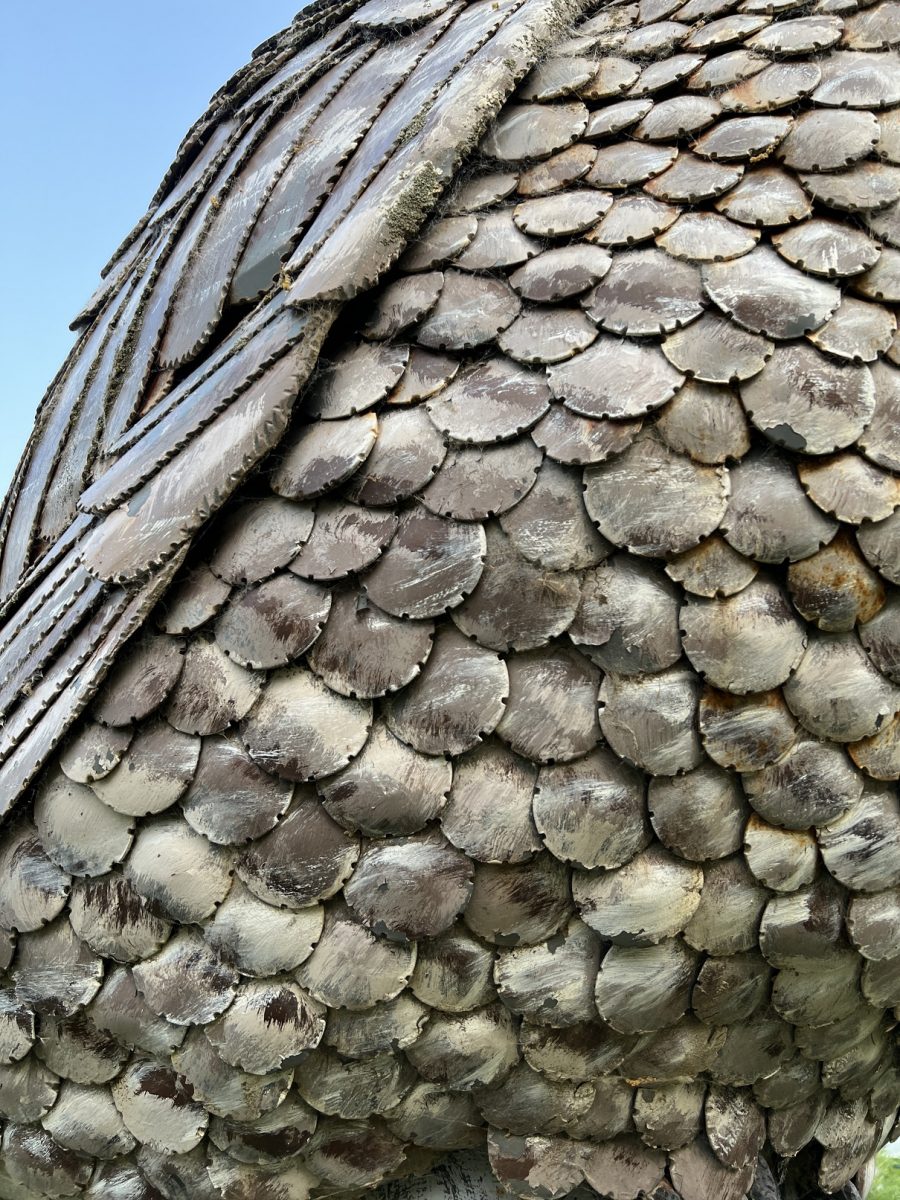
The hotel serves a buffet breakfast at 6 so was able to get an early start. My only activity for the day was to hike to Grey Owl’s cabin. I would give myself the whole day to do it.
Riding Mountain National Park. In the 18th century, Pierre de la Verendrye traded in the area, and soon the Hudson’s Bay Company followed with their own fur trade posts. Unfortunately, over the next century, fur trapping and trading led to many species of animal being eradicated from the region. It is thought that Riding Mountain got its name from the best mode of transportation through the rugged land during this time: by riding horses.
By 1881, the railway had reached many parts of Manitoba, making the area even more accessible, but the land was soon established as a forest reserve in order to help preserve the region. By the early 20th century, it was proposed that Manitoba should have a national park; although the Whiteshell area was first considered, Riding Mountain eventually became the chosen land. The forest reserve was set aside as a national park in 1929 and officially opened to the public on July 26th, 1933.
Unlike other national parks, Riding Mountain is situated in the communities of Wasagaming and Onanole. The town shops are within walking distance of the campsite.
I picked campsite 301. It was close to the exit and I had no one around me. But I was close to the road so lots of traffic noise.
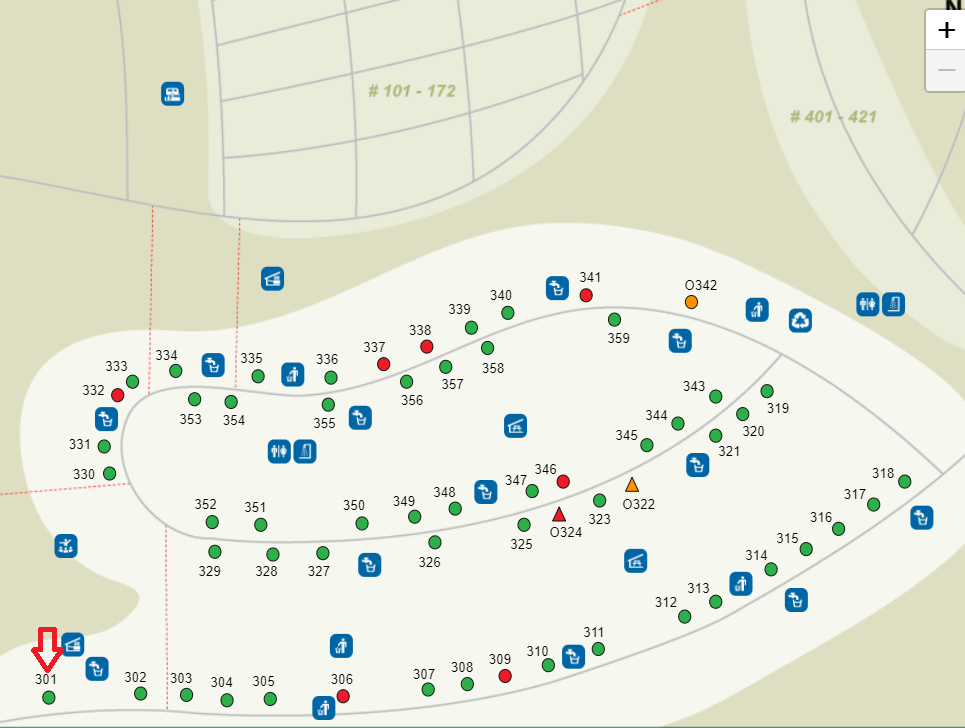
We headed straight for the trail first before checking into the campground. I wanted to get as much of the early morning coolness. However, the early morning also comes with mosquitos. Drenched in Deet, we headed for the trailhead.
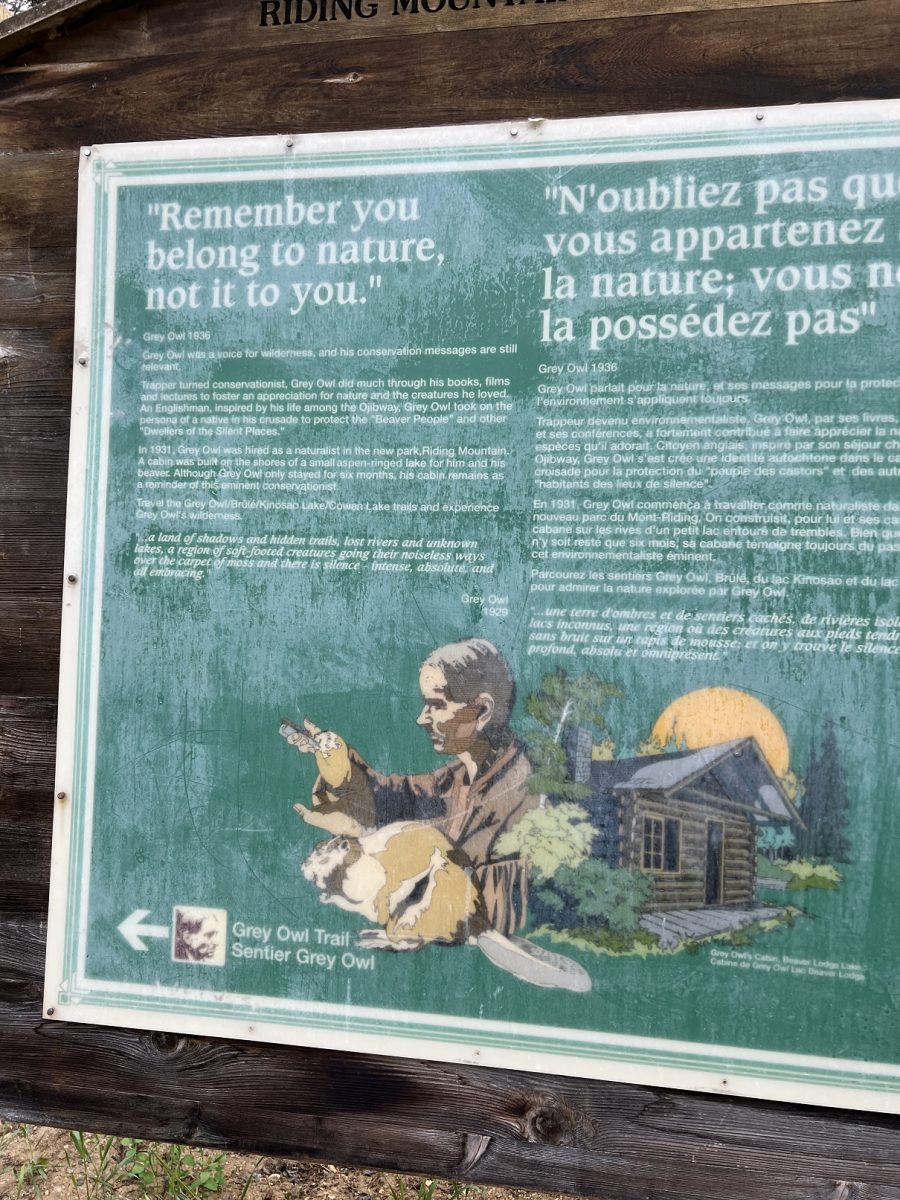
Grey Owl’s Cabin. Both the Kinosao and Grey Owl Trail begin at the same trailhead. Kinosao is a 7 km loop trail that takes about an hour and half to complete. The Grey Owl trail is a 14 km in and out trail that takes about 3.5 hours to complete. It took us 5 hours with the breaks and rest period at the cabin.
The major problem was I took the long route to get there. If you look at the picture, there is a trail on the left and one on the right side. There was no trailhead marking.
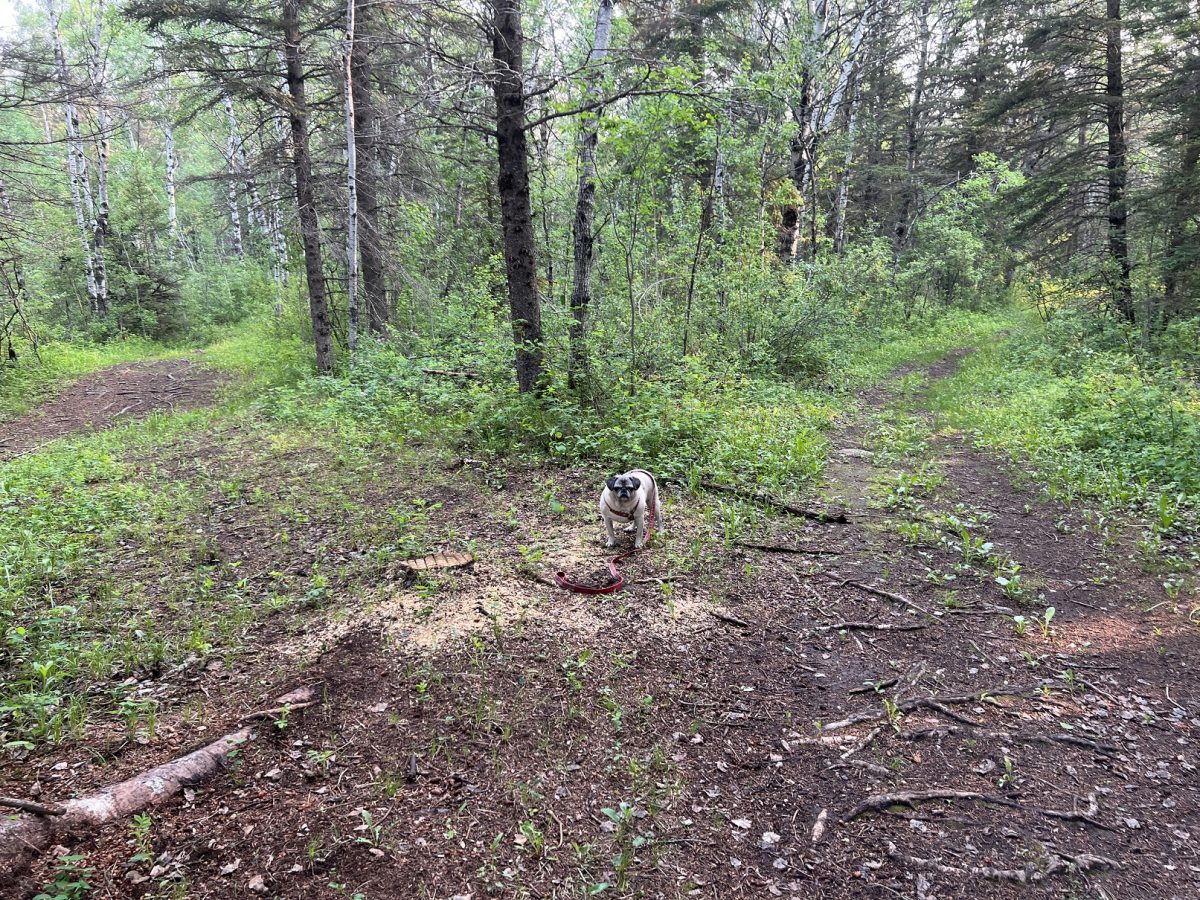
I wanted to go to his cabin in Prince Albert National Park in Saskatchewan when we were there in 2019. But there trail was much too long. On this trail, even though it is long, we will take our time.
I decided to take the right trail because it looked easier. It turned out to go to Kinoso Lake. At the Lake I was able to intersect with the Grey Owl trail but it took us maybe about an hour longer because of that.
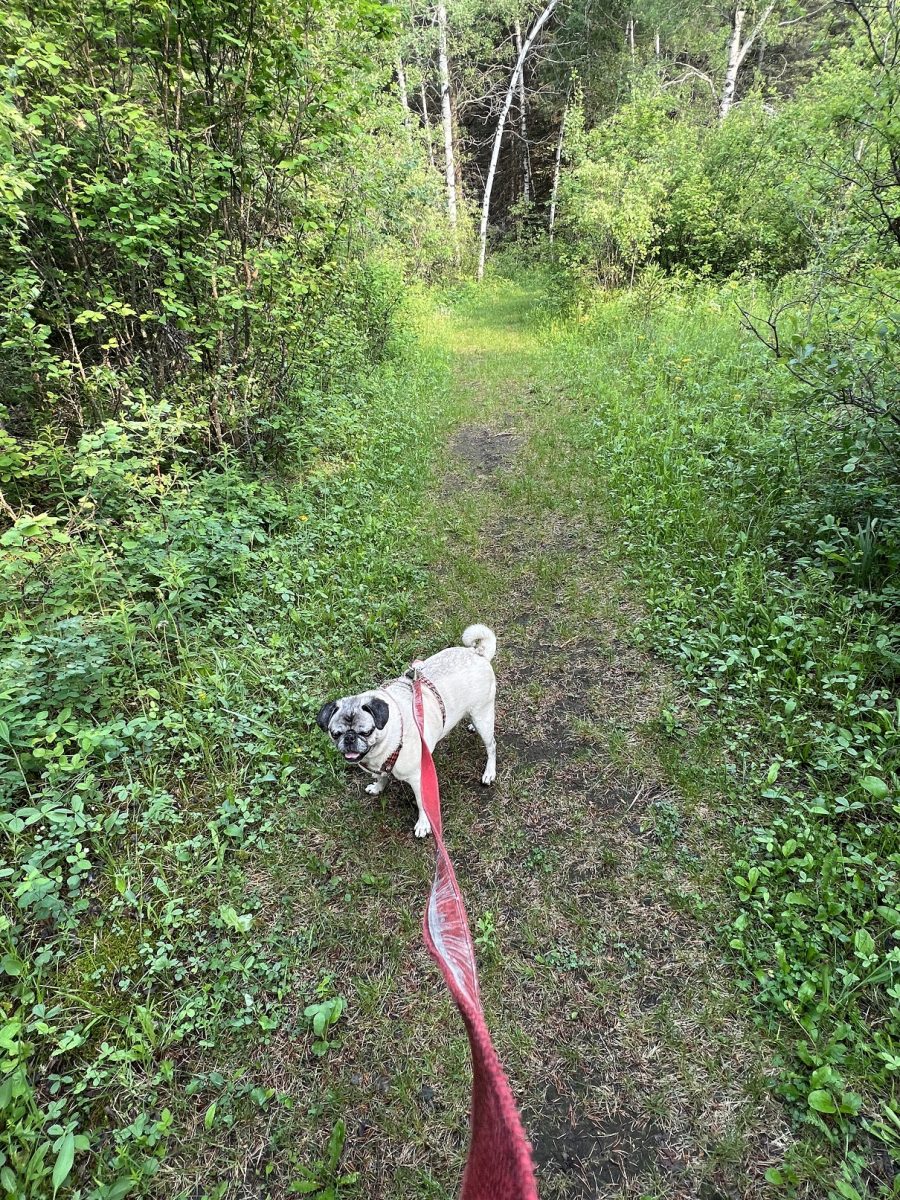
Greta went in the back pack but by the end she was tired and trying to get out. We simply had bit off more than we could chew.
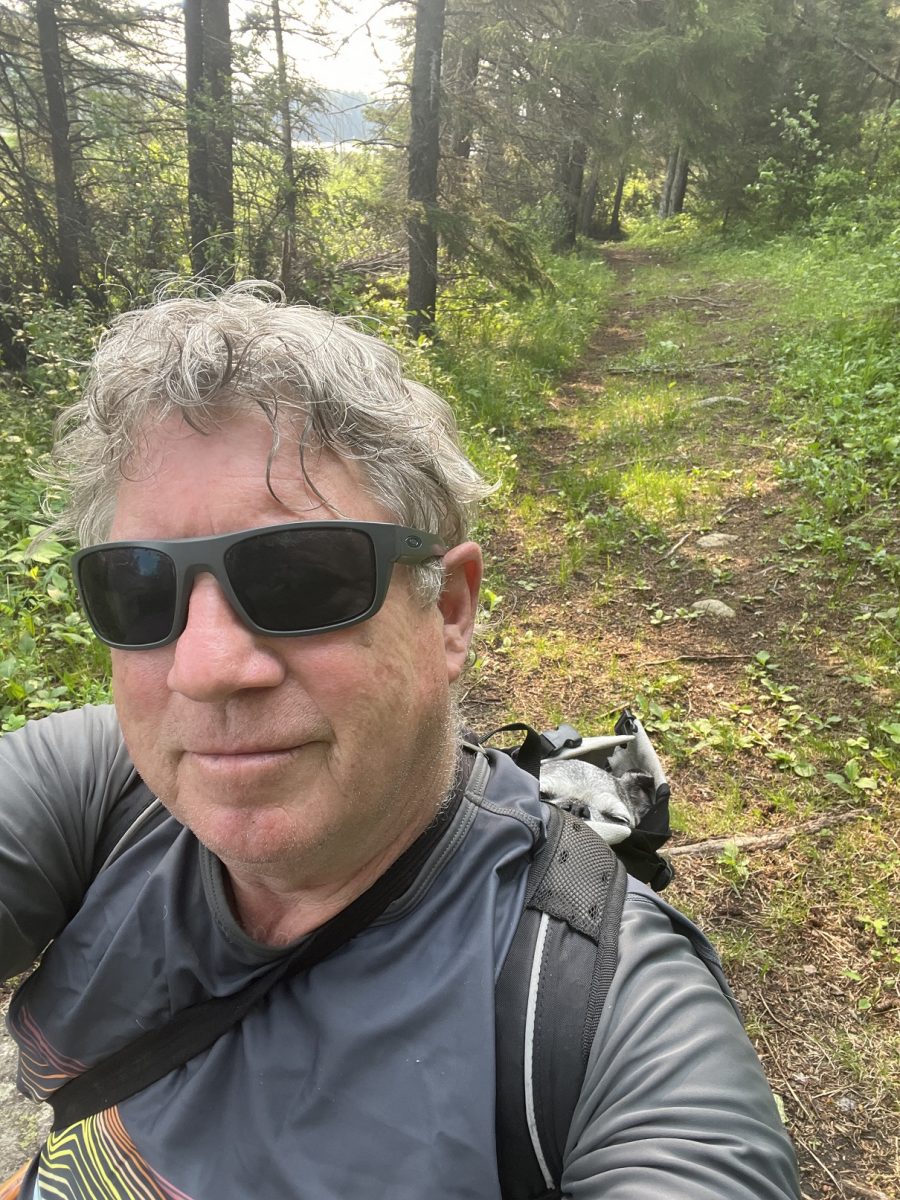
At the end of the Grey Owl trail is Grey Owl’s first cabin. Grey Owl was Englishman Archibald Belaney, a famous author, lecturer and conservationist. In his disguise as Grey Owl, he was hired by Parks Canada to reintroduce the beaver to Riding Mountain National Park.
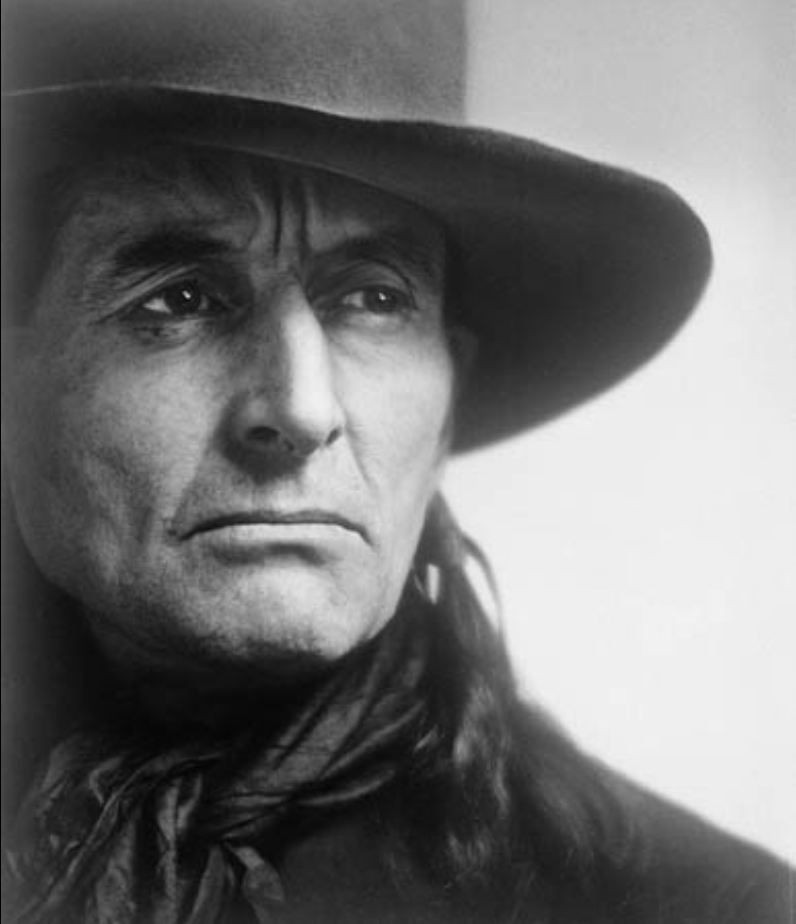
Portrait by Yousuf Karsh
After emigrating to Canada, he worked in Northern Ontario as a fur trapper and forest ranger. It was during this time that he became Grey Owl, studying the language and culture of the Anishinaabe people.
Through his Mohawk Iroquois partner, Anahareo, he came to understand the destruction caused to the beaver population.
They moved to Riding Mountain National Park with his pet beavers Jelly Roll and Rawhide in the summer of 1931. The story goes that Grey Owl had accidentally killed the mother beaver and raised the two “kits” that were orphaned.
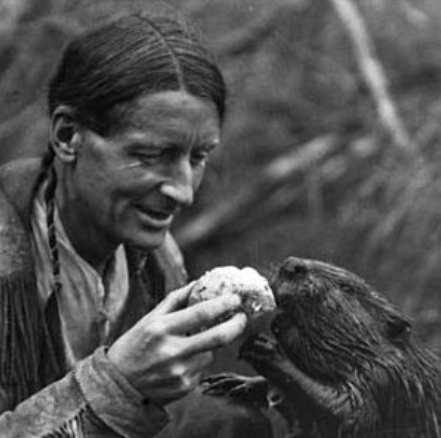
However, he wanted to canoe, which he found the park to be unsuitable for. So they moved to Prince Albert National Park in Saskatchewan where he introduced a successful beaver population
The cabin is designated a Heritage Building by the Canadian government. Parks Canada began the restoration of the cabin in 2019. Among the unique aspects were the beaver chutes that allowed beavers to enter and exit the building.
The cabin was surprisingly cool. We rested in there for about 30 minutes. It was so peaceful. No one around for miles.
On our way back, we reached the firewood station and there was a sign stating it was 3 km to the car park. It was the longest 3 km I have ever taken. When we reached the car, I put Eve in the front and blasted the air conditioning. She was fine by the time we got to the campsite.
1929 Dining and Lounge. Built in 1929 by Oswald and Ernest Gusdal, previously known as the Wigwam Restaurant, 1929 Dining and Lounge was the first commercial building to be built in this area.
When first open as a business it operated 24 hours a day, acting as a commissary and hall for work camps in the area. Throughout the years it also substituted as a dance hall, church, meeting hall, and barracks. Architecturally, it was built in the Tudor Rustic style, featuring an intricate hipped ceiling, horizontal split-log siding, and central dormer.
In 1992, the building was designated as a Provincial Heritage Site and has been undergoing extensive renovations and restoration work since 1993.
My waiter must have been new on the job. I asked him what the featured soup was and he didn’t know. I ordered soup as an appetizer and then the pan-fried pickerel for the main. He brought both out at the same time. I told him normally restaurants serve the appetizer first and then bring out the main. I told him to take the soup back. Also he hadn’t brought me any cutlery. He was a nice guy, friendly smile, just poor at his job.
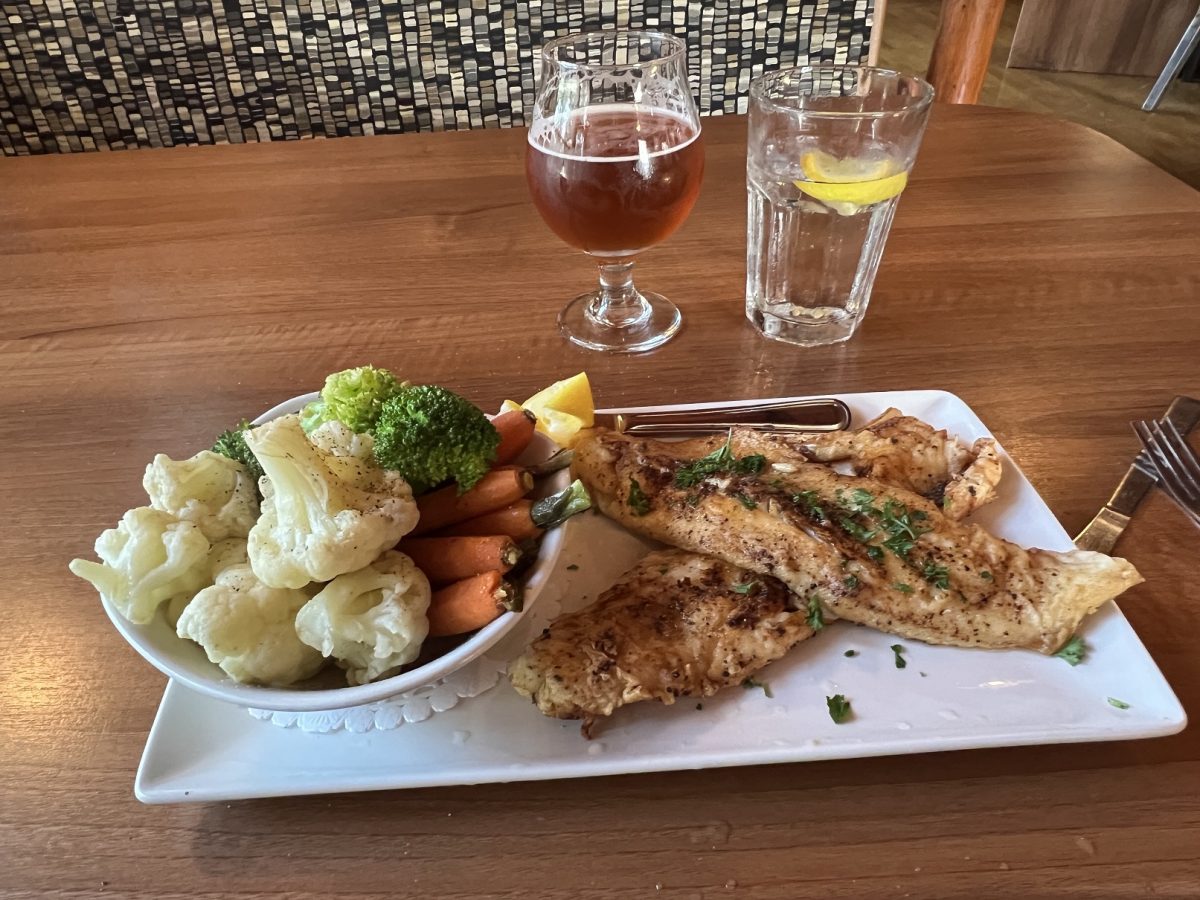
We got back to camp but I was still sore and achy from the hike. Took be awhile to finally setup the tent. There are no fire restrictions in Manitoba so I started a fire. Greta had been quite active, prancing around the campsite. But when the fire started she went off and hid. Think it may have been the cracking and popping of the logs.
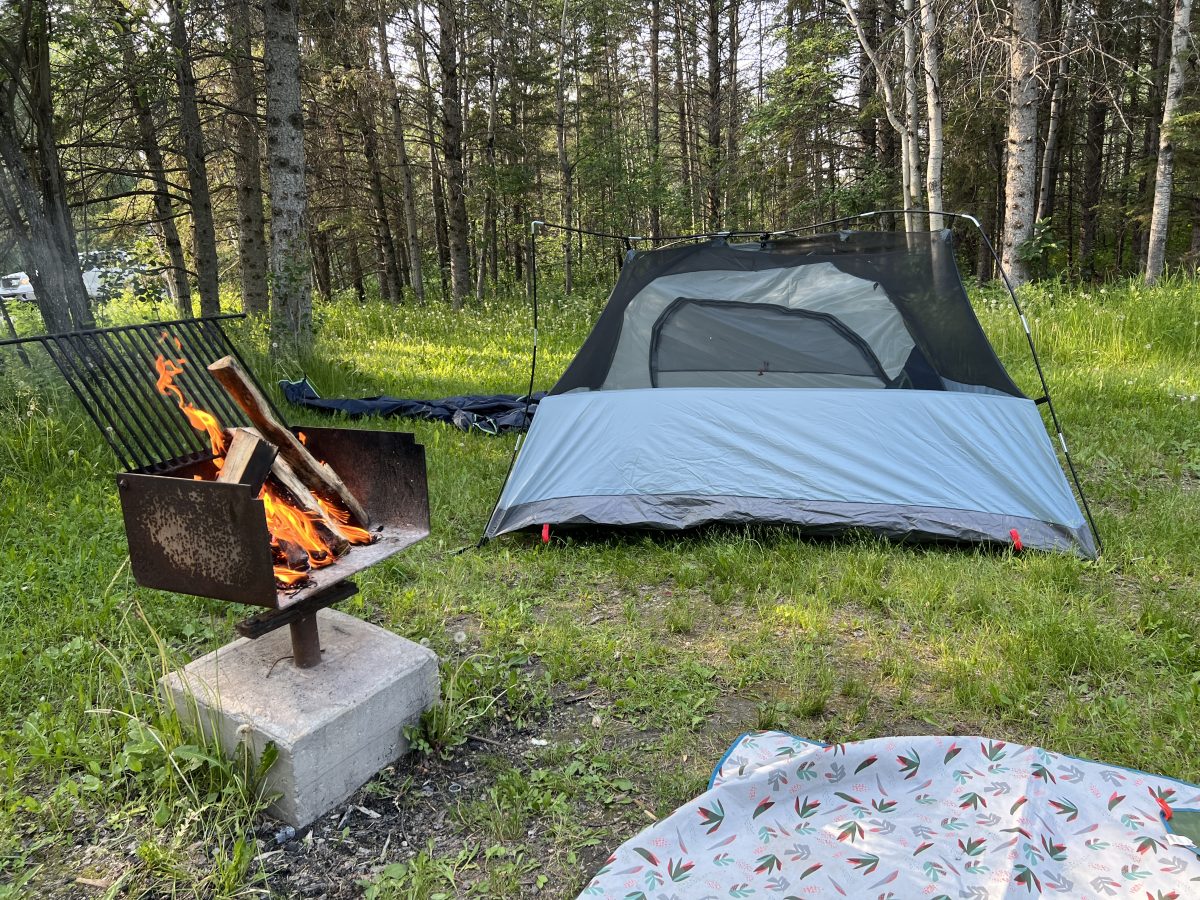
We all crashed out at 8 pm.
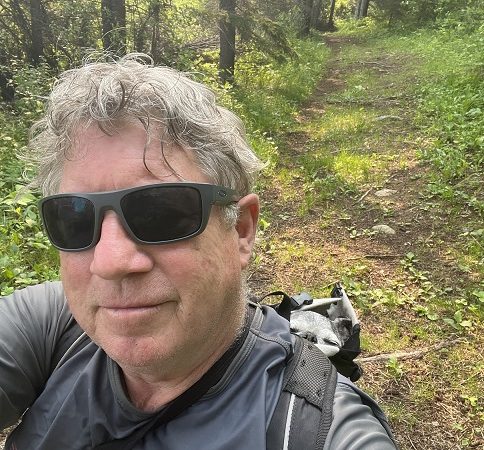
What a fascinating story about “Grey Owl!” My goodness talk about an extreme cultural experience! Very interesting indeed, Larry! But what a hike! However, you can now say,”Been there, seen it, done it!” Bravo to Greta & Eve. Now there is history in the making! ❤️🐾🐾
Hope you all had a good nights sleep. Sounds like it was a very busy day of hiking.